Einleitung
Beim MacBook Pro ist ein beliebtes altes Feature zurück und es fängt mit "M-a-g" an. Wenn ihr jetzt MagSafe geraten habt, dann müssen wir euch leider enttäuschen, aber wenn ihr "Magic Keyboard" geraten habt, dann haben wir einen Teardown für euch. Hier ist das nagelneue, Butterfly-lose, 16 Zoll MacBook Pro und wir werden es heute völlig auseinandernehmen, vom schicken neuen Wärmedesign bis hin zu den dröhnenden Lautsprechern. Lies dir auf jeden Fall unseren Blog Post durch, so hast du schonmal einen ersten Eindruck.
Juckt es dich nach noch mehr Teardowns? Dann folge uns auf Facebook, Instagram und Twitter und erhalte alle Teardown-Neuigkeiten. Oder abonniere unseren Newsletter, um alles direkt ins Postfach zu bekommen.
Werkzeuge
-
-
Das moderne MacBook Pro gehört zu den kontroversesten Geräten von Apple, aber das war nicht immer der Fall. Wir hoffen sehr, dass dieses neue Modell zu seinem alten Glanz zurückkehren wird. Hier sind zunächst einmal die technische Daten unseres Teardown-
OpfersGeräts: -
16" LED‑hintergrundbeleuchtetes IPS Retina Display mit True Tone, 3072 × 1920 Auflösung (226 ppi)
-
2,6 GHz 6‑Kern Intel Core i7 (Turbo Boost bis zu 4,5 GHz), gekoppelt mit einem AMD Radeon Pro 5300M
-
16 GB 2666 MHz DDR4 SDRAM
-
512 GB SSD
-
100 Wh Akku
-
6-Lautsprecher-Soundsystem und eine Hochleistung-Mikrofon-Anordnung
-
-
-
Wenn man sie wie Pancakes übereinanderstapelt, ist zu erkennen, dass das neue MacBook Pro deutlich größer (und einen Hauch dicker) als das letzte 15" Modell ist. Es ist eigentlich gut mit dem 2015 Modell vergleichbar, also, von der Größe her, nicht von der Auswahl an Anschlüssen.
-
Rücken and Rücken mit dem 2015 Pro hat man den Eindruck doppelt zu sehen ... bis man genauer hinschaut. Das Displayscharnier ist anders und die Tasten des alten Pro stehen etwas mehr heraus.
-
Bei einem ähnlichen Vergleich zwischen den beiden 2019 MacBook Pros, ist zum 16" Folgendes zu sagen:
-
Eine physische Esc-Taste, die von der Touch Bar getrennt ist
-
Ein mattes Finish auf der Touch ID/ Einschalttaste, was zum Rest der Tasten passt
-
Eine etwa 19 mm kürzere Touch Bar
-
Pfeiltasten in Form eines umgekehrten T, alle in halber Größe
-
Wenn man auf das linke Gitter zoomt und das Bild verbessert, sind die getarnten Löcher für die verbesserten Dreifach-Mikrofone zu erkennen. Und nachdem du das jetzt weisst, wirst du sie immer sehen.
-
-
-
Jetzt dürfen wir endlich das tun, was wir am besten können: Werkzeuge in Sachen reinstecken und sehen, was auseinander geht.
-
Fangen wir mit den Tastenabdeckungen an. Erinnert ihr euch an das Magic Keyboard des iMac? Es handelt sich dabei um ein beliebtes und zuverlässiges Design, das Apple als "Kerntechnologie" für die überarbeitete Tastatur in diesem neuen Gerät bezeichnet.
-
Das ist wahrscheinlich etwas untertrieben: Im Vergleich nebeneinander gelegt, sind sie kaum zu unterscheiden. Schalter mit Scherenmechanik, Tastenkappen ... Um die neuen Tasten herum ist etwas weniger Platz und Experten werden diese rekonfigurierten Pfeiltasten feiern, aber alles andere sieht fast identisch aus.
-
Um den Vergleich noch etwas abzurunden, hier ist ein drittes Bild vom kontroversen (und notorisch launischen) "Butterfly"-Schalter im 15" MacBook Pro, das erst vor wenigen Monaten auf den Markt kam.
-
Aber warum sollten wir hier aufhören? Hier ist auch noch der Schalter mit Scherenmechanik im "Unibody" 2012 MacBook Pro Design ...
-
... und der mit Scherenmechanik in Apples letztem Laptop mit einer "guten" Tastatur, dem 2015 MacBook Pro mit Retina Display.
-
-
-
Was befindet sich unter dem Scherenmechanismus? He, wir stellen hier die Fragen, du nimmst dieses Teil auseinander.
-
Moment, ne, andersrum.
-
Hier sehen wir das "von Apple entwickelte Rubber Dome, das mehr potenzielle Energie für einen schnelleren Tastendruck speichert."
-
Darunter befindet sich ein Modul für die Hintergrundbeleuchtung mit einem interessanten Muster - mehr dazu später.
-
Und um all das herum ist eine dünne schwarze Dichtung, wahrscheinlich, damit keine Helligkeit an den Kanten der Tasten herausleuchtet.
-
Wieder verglichen mit dem Desktop Magic Keyboard:
-
Die beiden Scherenmechanismen sehen fast identisch aus. Der alte Magic Scherenmechanismus ist einen Hauch dicker (1,6 vs 1,38 mm)
-
-
-
Trotz der unterschiedlichen Dicke sehen sich diese Tastaturen so ähnlich, dass wir versucht sind, schwarze Magie mit weißer zu mischen, um zu sehen, was passiert ...
-
Ja, was ihr hier seht, ist eine weiße 2015 Magic Keyboard Tastenkappe auf einer 16" MacBook Pro Tastatur mit Scherenmechanik. Und es funktioniert!
-
Die alte Magic Command Taste ist kleiner (daher der große Abstand um die Taste herum) und dicker als die neue.
-
Nicht jede einzelne Taste ist substituierbar und die alten Magic Tasten haben keine durchsichtige Beschriftung für die Hintergrundbeleuchtung. Freut euch also nicht zu früh, ihr Tastatur-Modder.
-
-
-
Wir sind fertig damit, an der Tastatur herumzustochern (wenigstens im Moment), jetzt heben wir den Deckel ab, um einen Blick ins Innere zu werfen.
-
Apple hat uns schon in einem GIF bei ihrer Pressemitteilung diese verärgerte Eule gezeigt, aber was wir noch nicht gesehen haben, sind hochenergetische Röntgenstrahlen, die durch die Eule gehen, und uns zeigen, was sich hinter ihrem frustrierten Äußeren verbirgt.
-
Die Röntgenstrahl verärgern sie noch mehr! Los, rennt! Zum Glück nehmen unsere Freunde bei Creative Electron hier alle Risiken auf sich, wir machen mit der Demontage weiter, sobald sich die Dinge ein bisschen beruhigt haben.
-
-
-
Torx Schrauben, Schmorx Schrauben, unser Marlin Schraubendreher-Set wird mit allem fertig. (Obwohl, wenn wir so darüber nachdenken, müssen wir noch eine Verwendung für die Schmorx-Bits finden.)
-
Selbst wenn der Computer geöffnet ist, stehen wir vor einem weiteren Rätsel, einem maskierten MacBook! Bist du das, Bruce?
-
Apple preist beim Wärmedesign dieses MacBook Pro wichtige Fortschritte an, und sagt, dass dieser Kühlkörper 35 Prozent größer ist. (Wir hätten eher 34 geraten, aber glauben wir ihnen einfach mal.)
-
Wir haben auch etwas verbesserte Hardware gefunden, die das, was wir für die neuen schnellen GDDR6 Chips halten, bedecken: eine Kupferplatte und ein paar Wärmepads aus Aluminium.
-
-
-
Diese Logic Boards sehen für uns immer aus wie Schnurrbärte, gehen wir also mit diesem anthropomorphen Vergleich sehr sehr weit und kämmen wir durch die Barthaare. Folgendes bleibt an unserem Kamm hängen:
-
Intel Core i7-9750H 6-Kern Prozessor der 9. Generation
-
16x Micron MT40A1G8SA-075 8 Gb DDR4 SDRAM (insgesamt 16 GB)
-
AMD Radeon Pro 5300M mobile GPU
-
4x Samsung K4Z80325BC-HC14 8 Gb GDDR6 RAM (insgesamt 4 GB)
-
Toshiba TSB4227VE8434CHNA11926 und TSB4227VE8437CHNA11926 Flash-Speicher (insgesamt 512 GB)
-
Apple T2 APL1027 339S00536 Coprozessor
-
Intel JHL7540 Thunderbolt 3 Controller
-
-
-
Wir kämmen weiter nach Silizium. Silizium kommt in Sand vor. Haben wir das bisher völlig falsch gemacht?
-
Intel SR40F Platform Controller Hub
-
Texas Instruments CD3217B12 (wahrscheinlich Leistungs-Controller)
-
338S00267-A0 (wahrscheinlich eine Apple PMIC)
-
Texas Instruments TPS51980B Leistungs-Controller
-
339S00610 (wahrscheinlich ein Apple Wi-Fi/Bluetooth Modul)
-
Intersil 6277 PWM Modulator
-
Renesas 225101C
-
-
-
Das Motherboard ist ausgebaut, jetzt können wir einen Blick auf das restliche verbesserte Wärmedesign werfen.
-
Wenn man das neue MacBook Pro auf seinen nur wenig älteren Bruder (das 15 Zoll 2019 Modell) legt, ist zu sehen, dass es über auffallend größere Lüftungsöffnungen verfügt.
-
Das klingt wie eine Menge heiße Luft, aber alle diese coolen Verbesserungen sollen es diesem 16" Pro angeblichen ermöglichen, bis zu 12 Watt mehr bei intensiver Arbeitsbelastung auszuhalten als das vorherige Design.
-
-
-
Langsam lösen wir die Tastatur-Hintergrundbeleuchtung ab, in der Hoffnung, darunter etwas Magie zu finden.
-
Die Hintergrundbeleuchtungs-Baugruppe beinhaltet einen flexiblen Diffusor, der Licht von LEDs an den Kanten verteilt. Flexible Diffusoren sind gängig, aber dieser hier scheint über eine besondere Ätzung zu verfügen, möglicherweise, um Helligkeit und Gleichmässigkeit zu optimieren.
-
Unter der Hintergrundbeleuchtung entdecken wir ein paar Pentalobe P2 Schrauben an den Kanten des metallenen Tastaturrahmens. Was kann das sein? Können wir dieses Ding auseinanderschrauben, um eine defekte Taste nach einem Tippmarathon mit krümeligen Doritos auszutauschen?
-
Neeeeeein! Wieder einmal ist die Tastatur-Baugruppe festgenietet. Obwohl die Schalter wahrscheinlich weniger anfällig für krümelige Angreifer sind, ist die Tastatur nicht reparierbarer als die Butterfly-Tastaturen.
-
Im Grunde genommen ist es wieder wie 2016: Wir haben eine neue Tastatur mit einem nicht-reparierbaren Design, und nur Apples Zusage, dass sie "nicht kaputt gehen wird". Und diese Tastatur hier ist nicht einmal im Serviceprogramm für Tastaturen, also ... : /
-
Der einzige Hoffnungsschimmer ist die Tatsache, dass dieses neue Tastaturdesign früheren Apple Tastaturen extrem ähnlich ist, und diese hatten ja meistens langfristig gehalten.
-
Da wir die Tastatur nicht einfach so stehen lassen wollen, zerlegen wir sie so weit wie möglich, um herauszufinden, wie sie klickt. Wir werden mit einem Blick auf die flexible PCB Schicht belohnt, die zwischen der Taste und der metallenen Rückplatte eingezwängt ist, da wo der Knopfdruck passiert ... aber es ist keinerlei Magie in Sicht.
-
-
-
Alle unsere Tastatur-Fragen sind beantwortet, jetzt können wir uns den restlichen Teilen zuwenden, die noch herumliegen.
-
Als erstes sind die schicken neuen
XL OhrhörerLautsprecher mit einem erweiterten Gehäuse und gegenüberliegenden Tieftönern oben und unten an der Reihe. -
Uns ist nicht ganz klar, was das verlängerte Gehäuse soll, aber wir nehmen an, dass die neue Form den Ton umleitet, um seine Qualität zu verbessern. Vielleicht war mehr Volumen nötig, um Platz für den zweiten Tieftöner zu schaffen?
-
Als nächstes kommt ein weiteres Sound-Upgrade: eine leistungsstarke dreifach-Mikrofon-Anordnung. Sie sieht ähnlich wie die im MacBook Air von 2018 aus, ist aber etwas massiver, was heißen könnte, dass die Mikrofone qualitativ hochwertiger sind.
-
Und zum Schluss das Lithium Kraftwerk, dass wahrscheinlich misstrauische Blicke von der FAA auf sich zieht: der 99,8 Wh Akku von Apple (11,36 V, 8790 mAh).
-
Das ist der größte Akku, den wir je in einem MacBook gesehen haben. 4,8 Wh mehr als im 17" MacBook Pro und heftige 16,2 Wh mehr als im letzten 15" MacBook Pro.
-
Woher kommt die extra Leistung? Apple hat hier das gleiche wie im iPhone 11 gemacht: Jede Akkuzelle sieht zwar identisch wie ihr Vorgänger aus, ist aber durchschnittlich 0,8 mm dicker.
-
-
-
Um dies genauer zu untersuchen, mussten wir das Display ganz entfernen. Dann konnten wir einen neuen, auf das linke Displayscharnier gerichteten Sensor, und einen im Scharnier eingelassenen Magneten finden. Der Pfeil auf dem Magnet zeigt die Richtung/Polarität an und dreht sich sich synchron mit dem Display.
-
Sieht so aus, als ob Apple einen Öffnungswinkelsensor eingebaut hat . Wofür wird der gebraucht? Werden dadurch coole neue Features in macOS möglich?
-
Möglich. Könnte aber auch sein, dass Apple damit sehr clever im Reparaturfall feststellen kann, wie das Gerät vorher behandelt worden ist. Zum Beispiel könnte Apple dann bei brüchig gewordenen Displaykabeln feststellen, wie weit und wie oft das Display geöffnet worden ist.
-
-
-
Unsere Gedanken zu diesem neuen MacBook Pro, das hier so schön zerlegt liegt:
-
Obwohl der schicke, neue, alte Scherenmechanismus wahrscheinlich länger hält als der empfindliche Butterfly-Mechanismus, ist die ganze Tastatur-Baugruppe immer noch festgenietet.
-
Das umgestaltete Wärmesystem ist eine willkommene Verbesserung zur berüchtigten Pro Linie, mit ihrem Problem der Überhitzung und Drosselung.
-
Der 99,8 Wh Akku fliegt gerade so unter dem FAA Radar, mit 16,2 Wh mehr Leistung als das neueste 15" Modell. Dafür, dass das Gehäuse nur geringfügig größer ist, ist dieser Leistungsanstieg überraschend.
-
Trotz der dröhnenden neuen Lautsprecher, der Mikrofonanordnung mit Podcast- Qualität und dem riesigen Bildschirm, haben wir das Gefühl, Apple hätte es besser machen können, vor allem nachdem Microsoft es mit echter Ingenieursmagie geschafft hat, seine letzten Laptops reparierbarer zu machen. Hoffen wir auf eine atemberaubende Pro Reihe in 2020.
-
Das einzige, was uns im Moment noch zu tun bleibt, ist, diesem Teil eine Bewertung zu geben.
-
-
-
Das MacBook Pro 16" von 2019 erhält 1 von 10 Punkten auf unserem Reparierbarkeits-Index (10 ist am einfachsten zu reparieren):
-
Das Trackpad kann immer noch ohne große Schwierigkeiten ausgebaut und ersetzt werden.
-
Kleinere Komponenten sind modular, aber der Prozessor, RAM und der Flash-Speicher sind am Logic Board festgelötet.
-
Die Tastatur, der Akku, die Lautsprecher und die Touch Bar sind mit Kleber und/oder Nieten befestigt, was die Reparatur dieser Komponenten verkompliziert.
-
Der Touch ID Sensor ist gleichzeitig die Einschalttaste und ist mit dem Logic Board verriegelt, was Reparaturen sehr schwierig macht.
-
98 Kommentare
almost no repair choices even though its a “pro” device
Gage -
What does being a “pro” device have to do with high repairability? “Pro” (itself more of a marketing term than a technical one) covers a proud range of areas. My sister is a pro graphic designer. She can do amazing things with illustrator or photoshop. She couldn’t tell you the next thing about processors or keyboard switches. For her the “pro” is what she can get done, not whether or not she can pop open the case. I’d be willing to lay odds thats true for a lot of people.
Repairability and pro are not connected. Some people value the former, some the later, some both, some neither.
kreutz -
In response to kreutz.
Hypothetical:
The Pro Graphic Designer is working on a commission that has taken several weeks. She has completed another days worth of work while out and about (the main point of a laptop, portability) someone drops liquid into the unit and it fails.
She could just redo the hours of work she just lost after her last backup (assuming she is someone who backs up religiously), however her deadline is tomorrow morning.
If she is using a true pro device she could drop by a computer repair place. Have them remove the SSD and recover the data. (in the macbook pro the SSD is soldered and even if it wasn’t the T2 chip prevents an external computer from reading it). If she is using the “PRO” device that apple sells she is $@$* out of luck and has to pull an all nighter to redo the work or loose the commission and be out all of the work she has done.
The ability to respond to unexpected situations damage, moisture, internal failure or design fault is what should set a PRO device apart.
@grantspedding The T2 does not prevent an external computer from reading the SSD. It is connected to one of the USB-C ports. There is a tool you can connect which will boot the T2 in DFU mode, prompt for the user’s password, tell the T2 to load the SSD, then dump all the data to an external drive.
Though I seriously wonder what professional would use a machine with no backups of in-flight work. Especially when it’s a Mac, and every macOS since 10.5 in 2007 has included Time Machine.
Zimmie -
For those suggesting that the moniker PRO doesn’t need to mean ‘repairable’, ‘accessible’, ‘non-complicated’, just consider any other PRO industry who relies hugely on repairability and the ability to get inside their devices / tools / instruments to keep them going as long as possible. A music producer wouldn’t throw away a 50 channel recording deck because 2 channels failed one day. A musician wouldn’t put their guitar in the dump because a machine head broke, $10 would get that musician back on stage again. A chef that finds their knife no longer sharp doesn’t look for the bin and a wholesale knife catalogue to buy a new one, they get a hone, or a stone and in 10 minutes their knife is possibly as good as new.
Apple have chosen this route for us and all to shave a few millimetres and grammes off laptops that Pro’s need to have as functional as possible. The moniker PRO is assumed to not only be top quality but top at saving the day when $@$* hits the fan and these machines are no longer that.
Between work I’ve done at an advertising agency, and a free lance photographer; you’d be amazed how many people market themselves as "Pros” but don’t have any backup of their work. Or they have a single external HDD which has all their work and accept that as their backup because time machine is running on it. The idea of “PRO” here is its Apple’s highest end laptop, and people can feel like calling themselves “pro” is justified. This has nothing to do with sensible backup strategies or thinking ahead to the what if scenario of a computer failure.
@zimmie So if the motherboard fails completely. ie when a mac gets a whiff of moisture in the air (hyperbole obviously) and the main board craps out and cannot enter DFU mode. What then?
@kreutz Additionally I would agree that the PRO moniker is massively overused/misused however all of Apple’s marketing really emphasizes specifically pro use.
As you said
“Repairability and pro are not connected. Some people value the former, some the later, some both, some neither.”
I would argue however that the pro you are referring to is a marketing gimmick just like “Mitsubishi Heavy Industries” in reference to normal domestic air conditioners. It has no right to claim the “Pro” moniker just as the air con has no right to claim “Heavy Industries”. So the people valuing PRO are quite literally valuing an empty marketing promise over something that could save their business when something goes wrong.
@grantspedding You CAN do that, but not always. For example, recovering data after damaging the laptop would be much harder since everything is encrypted. If the T2 chip is damaged in some way (by water, for example), then all of the data on there is unrecoverable.
The T2 chip is separate to my issues with this unit. Yes (very) theoretically you could recover from a damaged board. If you look at a comment above by Phillip Hue this requires several things including an intact T2 Chip and power rails to supply power.
However my big problem is the use of an ssd soldered to the motherboard. With a removable ssd it is possible to recover data even if the rest of the board has literal holes in it, components completely corroded off the board or if the USB-C ports are damaged (as in the comment above by Phillip specifies that these are required). My problem is with the way that apple have chosen to have absolutely no replaceable parts.
1 Ram chip fails… That’s a motherboard
1 Ssd chip fails… That’s a motherboard
A USB-C socket fails… That’s a motherboard
The wifi module fails… That’s a motherboard
anything goes wrong… That’s a motherboard
It’s a wasteful and anti consumer decision that cannot be justified
As a pro user, there’s definitely something to be said for repairability. However, as any pro should know, you never trust any one device or system completely. 99.9999% reliability still isn’t quite perfect, and I’ve experienced failures. That’s why I have backups. I NEVER rely on one storage medium. It’s much easier for me to quickly recover a file from Backblaze and work on another machine.. Price is also an important factor - it’s much less costly for me to quickly download a file and get back to work on a backup computer and FedEx my laptop to get repaired under warranty than it is to take time out of my day, pay out of pocket, and wait for a repair shop to recover my data. SSDs fail too, and being able to remove an SSD doesn’t do me much good if it’s what’s broken. Most of us work from servers or external drives regardless. Repairability matters, but my camera bag is already heavier than I’d like - if I have to sacrifice repairability for my back health, I’ll take it
well well. like 30 years of PRO models by every single other manufacturer.. well including apple till 2015, including Mac Pro. one of the best examples is HP Probook. it is clearly designed to be serviceable, you can swap the hard drive with 2 screws, you can clean fans, you can replace keyboard, etc. PRO means that you do not need to buy a new one as soon as you drop a few drops of liquid.
I can totally agree that a device’s performance is not affected by its repairability. But while you think that your device’s repairability has nothing to do with you, as you are not a professional repairer, the repairability of the device is very important when you run into a hardware issue. For example, a Thunderbolt 3 port on your MacBook is not working due to a malfunction of the Intel JHL Controller, that’s a motherboard right there, equivalent to nearly 2000 bucks, unless the repairer can perform micro soldering (Apple won’t do that). And who’s paying that fee? You, of course. Your screen cracks, another couple hundred bucks. Your keyboard breaks, no coverage program, bam, more money spent. In the end, you are suffering too. Apple’s gimmick is that they make things so unrepairable that your repairing fee is basically the same as buying another device (a tad bit cheaper), or that they simply don’t repair, so you are forced to buy more devices, and the more you buy, the more money Apple makes out of you.
I had my SSD cable broken last day, took out my SSD and connected it via USB, continued working until my new cable arrives in 3 three days. I do not have another laptop or PC. Being a pro does not mean you have multitudes of everything but being able to find quick solutions on the go. Now we can not do this with the new MacBook ‘pro’ . I upgraded my MacBook Pro (mid-2012) with an ssd and extended its life, but no more, now it is old and should get a new one. Stuck!
oh boy…why even allow it to be opened in the first place? rivets and glue just make this design worse.. I think you need to have a negative number for your review system- thx for the work on busting open these devices.
i wish they would just allow the batteries to be easily replaced at the very minimum
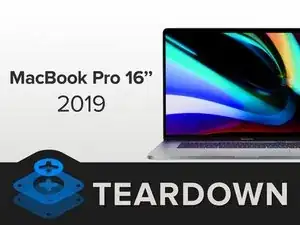
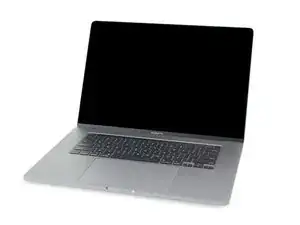
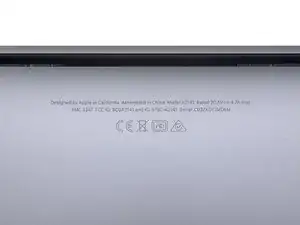
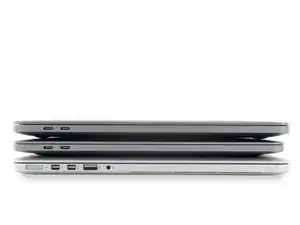
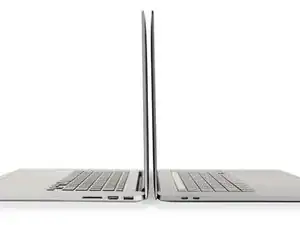
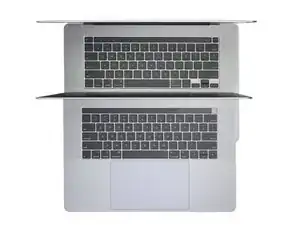
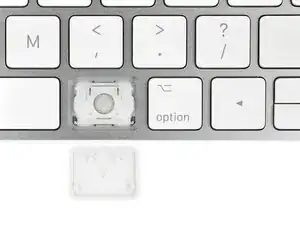
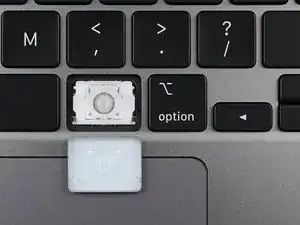
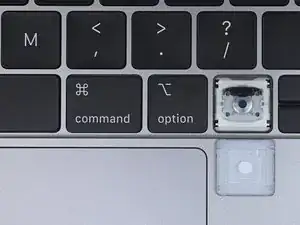
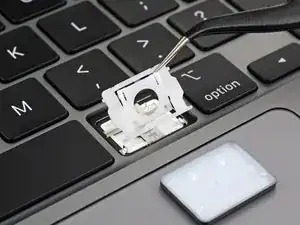

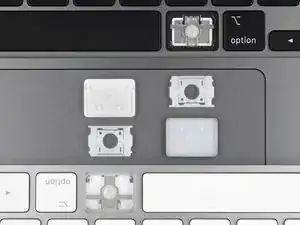
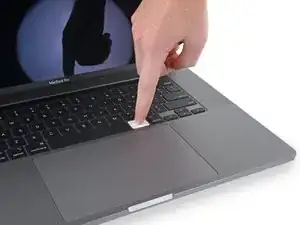
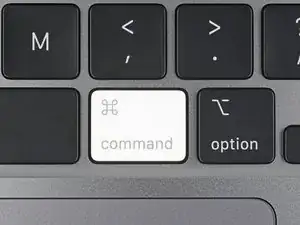
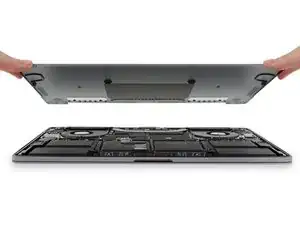
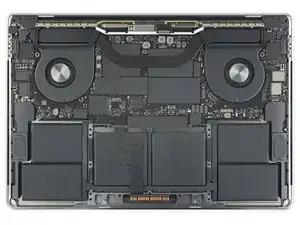
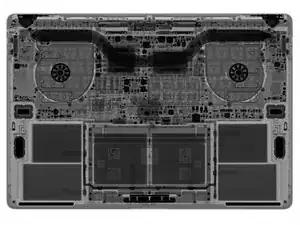
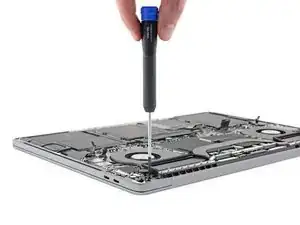
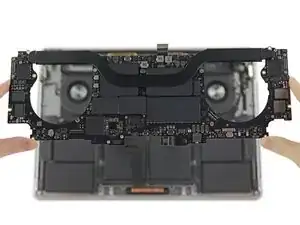
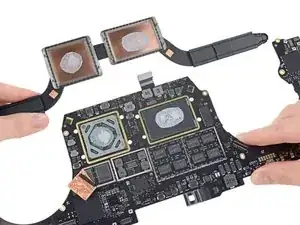

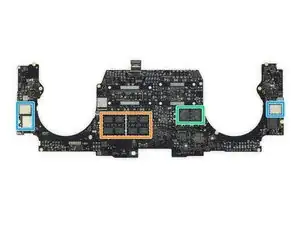
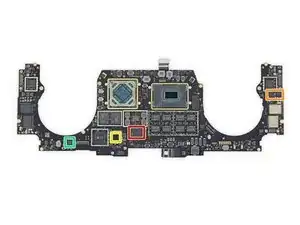
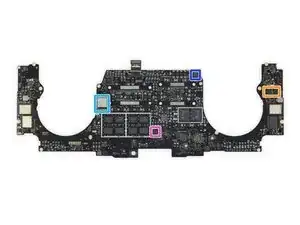
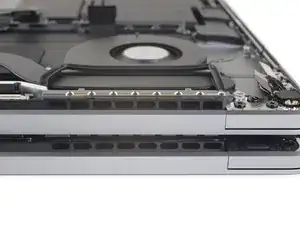
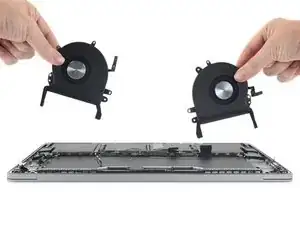
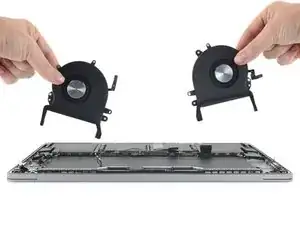
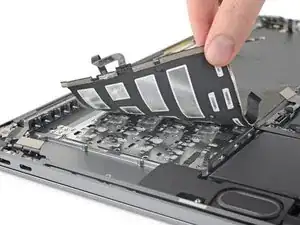
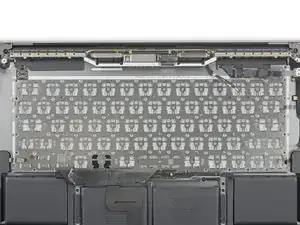
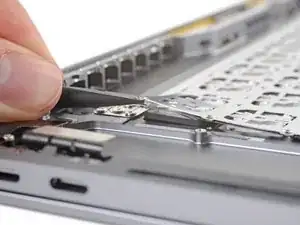
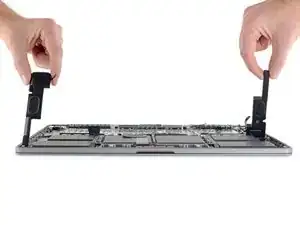
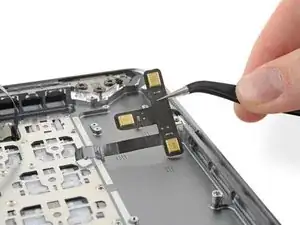
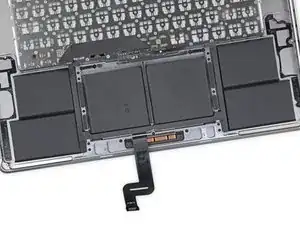
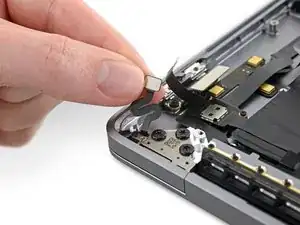
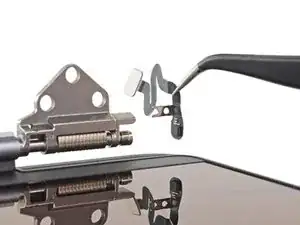
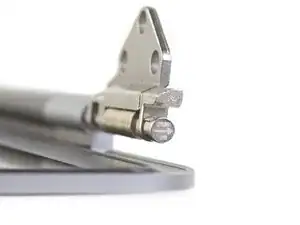
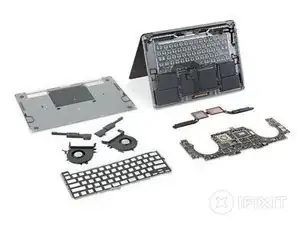
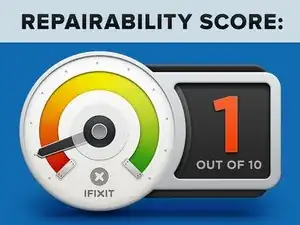

This video is blatantly erroneous and gave me just enough confidence in the wrong move as to (cosmetically only) damage the computer I am working on. It should be taken down immediately. If you dont know what I'm talking about consider getting a new job. "With a bit of force" smh. And I fell for it. The correct answer was buried under several copies of this same (well promoted and extremely bad) video. The correct answer is to pull the backplate towards the front of the computer NOT "WITH A BIT OF FORCE". I am wondering how many people have damaged their equipment as a result of this extremely amateur video coming from the people who make the toolkit I have in my hand.
Fix this please. Its embarrassing. For you.
Tyler Vega -